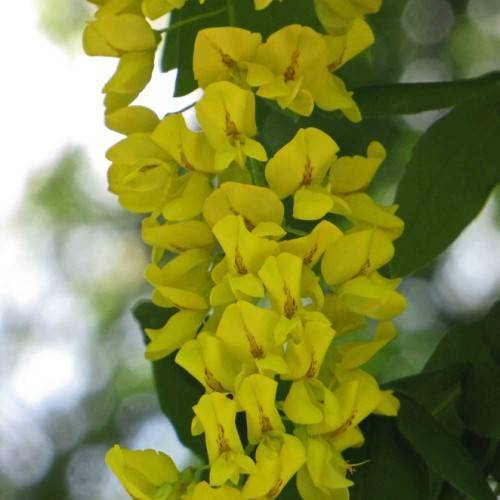
bean tree
Laburnum watereri
Cycle:
Perennial
Watering:
Average
Hardiness Zone:
5 - 7
Flowers:
Flowers
Sun:
Full sun,part shade
Leaf:
Yes
Growth Rate:
Low
Maintenance:
Low
Poisonous To Humans:
Yes
Poisonous To Pets:
Yes
Drought Tolerant:
Yes
Care Level:
Medium
watering
Bean Tree (Laburnum watereri) should be watered regularly throughout the year. When the plant is actively growing during the spring and summer, water it weekly with enough water to moisten the soil 2-3 inches deep. In the fall and winter months, water only when the soil begins to dry out. Do not overwater as this can cause root rot problems. Manure or compost should be added to the soil once a year to ensure proper nutrition.
sunlight
Bean trees (Laburnum watereri) grow best in areas that receive full sunlight. In order to maintain their health and longevity, they should receive at least 6 hours of direct sunlight daily, from the morning through mid-afternoon. When growing bean trees in areas that experience extended periods of cloudiness, and reduced amounts of sunlight, providing plants with artificial lighting can ensure their continued health. While direct sunlight is recommended, it is important to not let the sun scorch the leaves, so ensure that plants are sheltered from strong or direct sunlight during very hot periods.
pruning
Bean tree (Laburnum watereri) should be pruned when it reaches maturity in late spring or early summer. Pruning should be done with care to avoid excessive clipping that can cause irreversible damage. Pruning should involve removing any dead, damaged or diseased wood and any crossing, rubbing or overcrowding branches. TrIM a quarter of the previous season’s growth, leaving a natural-looking shape with no more than 4 or 5 main branches. Pruning to shape or encourage flowering should only be done after the tree has flowered.
